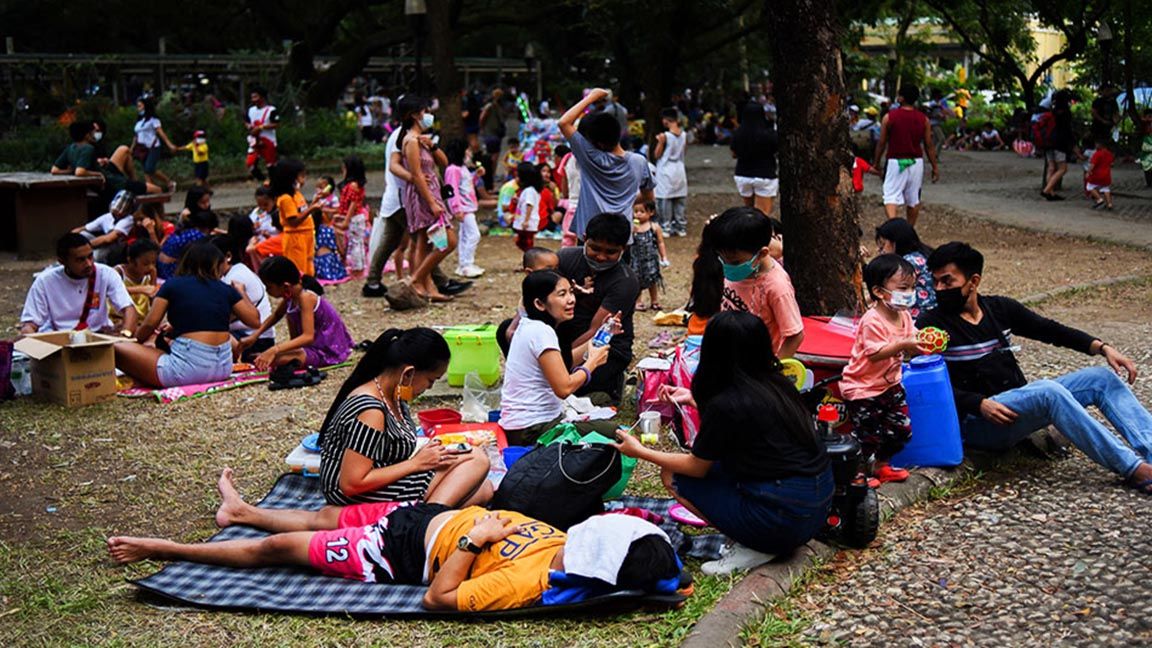We may be slowly bidding our freedom goodbye if we pursue our path of mindlessness about following health safety protocols. If we do not practice physical distancing and do not wear masks to shield ourselves from the virus, then we might return to higher alert levels in Metro Manila.
Citing upticks in the daily recorded coronavirus cases, the Department of Health is thinking of again putting Metro Manila under Alert Level 2—which means a bit more restrictions on movements and businesses should cases start soaring.
Just before the elections, people talked about the National Capital Region being put under lockdowns because of super spreader campaign sorties (jampacked by people who disregarded social distancing and mask wearing). Truth is the government was anticipating the caseloads to become unmanageable again.
This did not happen soon enough, but indications are beginning to show that caseloads might again be overwhelming the healthcare system, which is now busy attending to the long-delayed non-COVID illnesses (though non-communicable are still life-threatening if not attended to for a long time).
For now until June 15, Metro Manila stays at Alert Level 1.
Health Undersecretary and DoH spokesman for COVID-19 Maria Rosario Vergeire told Teleradyo that the possibility would always be there when the cases continue to increase but what the public needs to understand is that we are learning to live with the virus. We know that this virus will not leave. It will stay with us.
“So, these mild and asymptomatic infections should be acceptable to the population. What’s important is we are not seeing a rise in severe and critical cases and there is no problem with our hospitals. By observing if there is an increase in admissions, we are not seeing that.
Of the 17 local government units in NCR, 13 have a positive two-week growth rate of COVID-19 cases.
While the growth rate is positive, the number of cases is still insignificant in terms of crippling hospitals’ operations, Vergeire assured.
“Our monitoring of trends here in the National Capital Region, last week, we saw 14 out of 17 cities and/or municipality with positive two-week growth rate. Currently, 13 out of the 17,” she said.
“When we look at their average daily attack rate and cases in each area, we see that it is not still significant because it is not affecting the admissions in the hospitals,” she said.
She said the slight rise in COVID-19 cases may be attributed to mobility, presence of transmissible subvariants, and the waning immunity of COVID-19 vaccines due to low booster shot coverage.
Based on Department of Health data, the country posted an additional 308 confirmed cases on Sunday, driving the active cases to 2,918.
With the reopening of the country and almost all businesses, particularly malls, restaurants and leisure and gaming centers, people have been flocking on weekends in these airconditioned crowd- drawing centers and have tended to forget about social distancing as if there is no more COVID-19 threat.
A lot have removed their masks or wear them incorrectly even when faced with crowds.
Social events like weddings, birthdays, anniversaries and even graduations are being held almost simultaneously in one venue which draw even bigger crowds than the usual dine-in settings.
There are long queues of people waiting for their rides, or even in cinemas and recreational facilities.
In Cebu, Governor Gwen Garcia has ruled that masks are no longer mandatory, which led the national COVID task force and the IATF to refute Garcia’s order by saying that masks are still needed in the whole country.
The pending change of leadership has caused confusion to the public as to whose order to follow.
So it seems like the prevailing mindset is to each his own, which is dangerous because variants of COVID that are more transmissible are very much in the air.
Tags: #higheralertlevels, #DoH, #risingCOVIDcases, #masksarestillneeded
